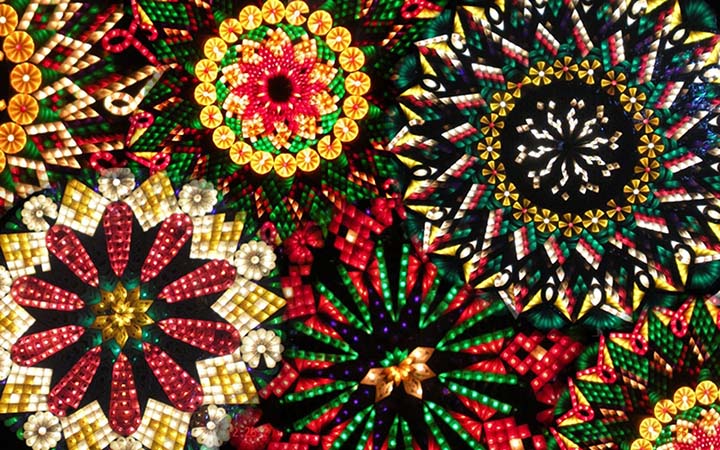Posted 7 years ago -

Christmas Decors, Filipino Style: Parol
In the Philippines, Christmas is an extremely lengthy affair, and as early as September, numerous decors of various colors and designs begin to litter the surroundings. One of the more quintessential symbols of yuletide celebration in the country is the iconic Parol. Just as much as Christmas trees are synonymous with the yuletide season in the West, the Parol is a perennial presence in the country, signaling the coming of festivities.
The term “parol” (pronounced /p???o?l/) is derived from the Spanish word “farol” which translates to “lantern”. It is generally believed that the concept for the parol was inspired by the Mexican piñata. Although it was originally from Italy, the piñata was brought to Spain and from there to Mexico then finally to the Philippines.
In the early days if its inception, the parol was used to light the way of those going to church for the Misa de Gallo and Misa de Aguinaldo. The owners, realizing the potential of their lanterns as decorative ornaments, would display their parols in their houses in between uses.
The first set of parols in the country hardly resembled the version that people have come to identify these days. Made from bamboo sticks which are covered by crepe paper (or papel de japon / Japanese paper), the parols were initially shaped like crosses of fleur-de-lis (lily-pattern). It wasn’t until 1908 that an artisan named Francisco Estanislao created the five-pointed star pattern that is now closely associated with parols.
Nowadays, the most common form used for parols is that of a five-pointed star with two decorative “tails”. The tradition of hanging lanterns is reminiscent of the biblical star of Bethlehem inspired the three wise men from the East (also known as the Magi) to travel to Jerusalem. The star eventually leads the three to Jesus Christ’s home in the town, where they worship him and each give him gifts of gold, frankincense, and myrrh.
These star-shaped lanterns can be found displayed hanging outside residences, along busy streets, in major commercial establishments, and even in provincial towns and small villages. Whereas materials used to be pretty simple and rudimentary, parols these days are made from materials that range from plastic, capiz shells, glass, beads, foil, feather, hemp, and even metal.
The City of San Fernando in Pampanga is renowned for being the home of the country’s best parol designers and craftsmen. As Christmas time approaches, the streets of San Fernando plays host to a cavalcade of dancing lights of multiple hues as store after store litter the thoroughfare selling their vibrant products.
Every year, the various barangays would compete during the City’s Giant Lantern Festival held annually on December. As a tradition that stretches back over a century (it was first held in the barangay of Bacolor in 1908 as Ligligan Parul or The Fight of the Lanterns), the spectacle is San Fernando’s biggest tourist attraction. So much so, that a theme park (Paskuhan Village) was built in 1990 to showcase the best looking and undeniably mesmerizing parols produced by the city’s storied artisans.
Parols are not exclusively limited in the Philippines. In Austria, parols are a big attraction in their annual Vienna Christmas Market. In Chicago, Illinois, renowned artist, Fred Deasis, offers free parol making workshops. In California, Filipino Americans celebrate their own version of an Annual Parol Festival every December.
Loading Comment